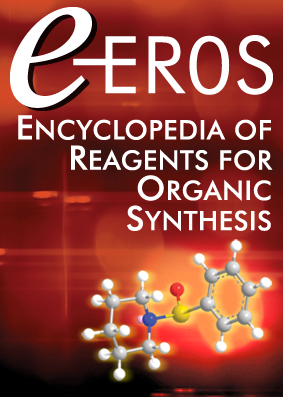Hydrogen Iodide†
Abstract
[10034-85-2] HI (MW 127.91)
InChI = 1S/HI/h1H
InChIKey = XMBWDFGMSWQBCA-UHFFFAOYSA-N
(electrophilic hydriodination of alkenes and alkynes;3-10 cleavage of epoxides,1b,11, 12 ethers, and acetals;13 conversion of alcohols to iodides;14-17 reducing agent for many groups including quinones,24, 25 α-diketones,23 α-ketols,23 α-halo ketones,19 α-diazo ketones,22 and sulfoxides;30 reductive cyclization of keto acids27, 28)
Alternate Name: hydriodic acid.
Physical Data: 57% aqueous solution: bp 127 °C; d 1.70 g cm−3.
Solubility: sol most common organic solvents.
Form Supplied in: compressed gas; colorless 57% aq solution; widely available.
Preparative Methods: from the reaction of tetrahydronaphthalene with I2;2 can be generated in situ (a) from Me3SiCl and NaI in the presence of water,3 (b) from I2 and activated alumina,4 (c) from KI and H3PO4,5 and (d) from Et2PhN·BI3 and AcOH.6
Purification: distillation of the aqueous azeotrope; concentrated solutions can be regenerated after long storage by treatment with hypophosphorous acid.
Handling, Storage, and Precautions: store protected from air and light at or below rt. Highly corrosive and toxic. This reagent should be handled in a fume hood.



